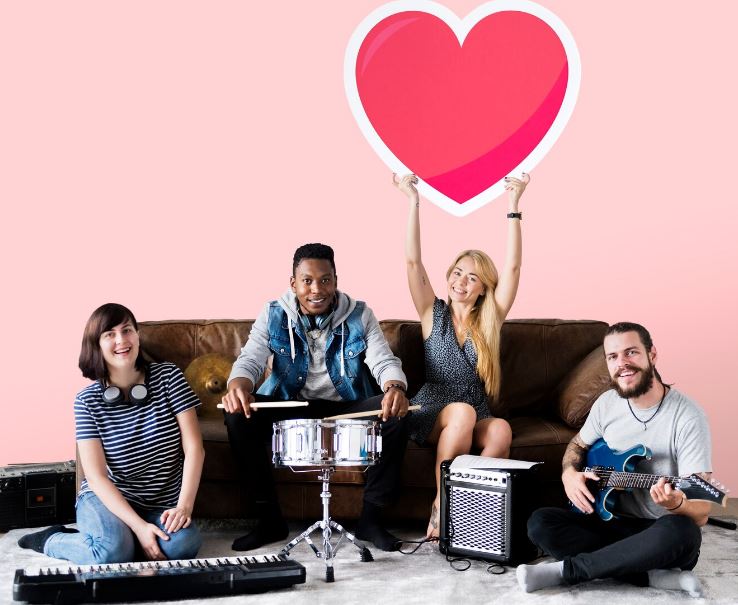
A slow but steady signal is spreading through small community halls, suburban high streets, and villages—not via satellite, but via trust. Flutt.co.uk The power of proximity is something that most media have forgotten, but The Love Tour: Radio in the Community is bringing it back. The Love Tour enters neighborhoods directly, erecting mobile broadcasts and inviting regular people to talk, sing, share, and remember—instead of depending on slick studios or famous DJs.
This initiative is changing the way public voices are heard by integrating radio into the very communities it serves. The concept is remarkably straightforward yet incredibly powerful. With a small crew, little gear, and a van equipped for outdoor broadcasting, the tour creates a powerful platform where ordinary stories are elevated to the level of news and local pride is amplified.
Overview of Flutt.co.uk The Love Tour: Radio in the Community
| Initiative Name | The Love Tour: Radio in the Community |
|---|---|
| Platform | Flutt.co.uk |
| Project Type | Community-Focused Mobile Radio Tour |
| Purpose | Amplify local voices, promote inclusion, foster civic pride |
| Format | Outside broadcasts, interviews, community group participation |
| Reach | Micro-local; mobile setup allows touring across UK towns |
| Supported By | Government funding uplift for community radio (2025–2026) |
| Operational Model | Non-profit, volunteer-led, public-interest driven |
| Target Audience | Underserved populations, local hobbyists, cultural collectives |
| Broader Impact | Strengthens community cohesion, supports local identity |
Segments in recent days have included everything from poignant interviews with Lancashire community leaders to choir rehearsals in Taunton. In one especially moving broadcast, a grandmother in a knitting group described how attending weekly meetings aided in her emotional healing after becoming a widow. Another featured a Yorkshire teen co-hosting a short youth segment about overcoming social anxiety. These aren’t your usual headlines, but because they depict real lives, they have a profound impact.
The Love Tour uses public engagement to educate and heal in addition to providing entertainment. Listening to voices that mirror your own worries, pleasures, and rhythms is noticeably better. Through this effort, community radio—once believed to be in decline—has been remarkably successful in regaining its relevance.
The variety of broadcast voices has been greatly diminished over the last ten years due to commercial radio consolidation. Local accents are almost nonexistent on national broadcasts, branding is strictly regulated, and programming has become uniform. However, there is a noticeable reversal of this trend with the Love Tour. Without waiting for approval, Flutt.co.uk set out on a mission to bring the microphone to the masses.
The grassroots model of the tour offers something especially novel in the context of media homogenization. It blends digital know-how with analog authenticity, frequently capturing live events for podcast and social media replay. By using a hybrid approach, the intimacy of the experience is preserved while it extends beyond its actual location.
The project transforms from radio into a reflection of the communities it enters by working with community organizations, libraries, choirs, disability support networks, and creative workshops. For listeners, being represented is more important than simply tuning in. The transition from passive consumption to active inclusion is particularly evident in the way people react, showing warmth, gratitude, and curiosity.
The foundation for this endeavor is further strengthened by funding support from the UK Government’s recent £600,000 boost to community radio stations. Now that Ofcom’s Community Radio Fund is awarding grants of between £5,000 and £30,000, more stations are able to hire employees, train volunteers, and try out new formats. The Love Tour is a prime example of how that investment can result in quantifiable effects.
Many people learned the importance of hyperlocal connections during the pandemic. Community stations covered food deliveries, local news, and mental health resources, while national media concentrated on more general stories. The tremendous versatility of community media was made evident during that time. The Love Tour is redefining what radio can accomplish on a more intimate, human level by tapping into and now extending that potential.
The tour has entered towns as collaborators rather than just tourists thanks to strategic alliances with local councils, educational institutions, and artistic collectives. At each stop, community leaders assist in organizing participants and topics through pre-event coordination. Because it ensures that segments reflect actual needs and interests, this co-creation model has proven to be very effective. Crucially, it also promotes participants’ skill development; many are exposed to sound engineering, scripting, or microphones for the first time.
The Love Tour serves as a cultural lifeline for medium-sized towns that have little access to arts programming. It facilitates intergroup communication, develops local talent, and closes generational divides. An open mic poetry night this year included a performer who was ten years old and one who was ninety-one. Many miles away, listeners shared the heartfelt, impromptu applause.
The strategy used by Flutt.co.uk also shows that producing content that has an impact doesn’t require a million-pound budget. You need the discipline to listen, journalistic curiosity, and community trust. These broadcasts are frequently unpolished, unscripted, and even chaotic, but that is exactly what makes them appealing. This programming, in contrast to well-executed entertainment, is like real life—it breathes, falters, and bounces back.
Initiatives like this one might end up being the most resilient type of public media in the years to come. There is something incredibly human about listening in on a conversation taking place right down the street, even as streaming behemoths compete for viewers’ attention and algorithms reduce content to clicks. It serves as a reminder that our communities are composed of voices that are patiently waiting to be heard, not of popular hashtags.
